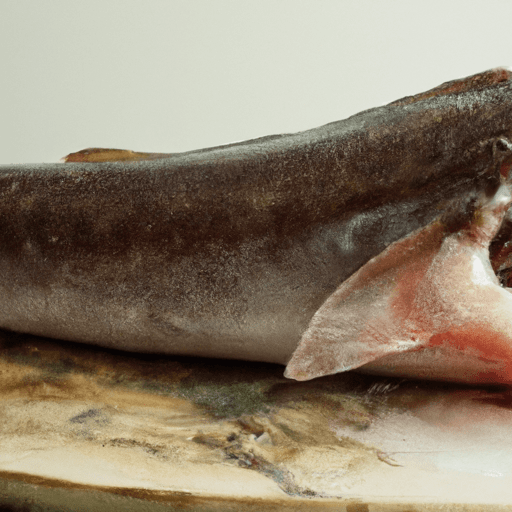The Delight of Dry Salt Cod: A Staple in Culinary Traditions
If you’ve ever delved into the vast world of seafood, you might have come across a fascinating ingredient known as dry salt cod. This preserved seafood, with its distinctive flavor and versatility, has been cherished in cuisines around the globe for centuries. Let’s dive deeper into the wonders of dry salt cod, exploring its taste, common uses in cooking, nutritional value, and some intriguing historical tidbits.
Taste and Texture
Dry salt cod, also known as bacalao, baccalà, or stockfish, possesses a taste that falls somewhere between fresh fish and salted meat. Its flavor is subtly briny yet pleasantly mild, making it an excellent choice for dishes where the cod takes center stage. The texture of rehydrated dry salt cod is firm and flaky, offering a delightful melt-in-your-mouth experience.
Common Uses in Cooking
Cooking with dry salt cod is an adventure that takes your taste buds on a journey through various culinary traditions. This versatile ingredient features prominently in countless beloved recipes from different cultures. Here are a few popular preparations:
1. Salt Cod Fritters (Bolinhos de Bacalhau)
These crispy, golden-brown fritters are a Portuguese delicacy. Combining mashed potatoes, finely shredded cod, garlic, parsley, and a touch of black pepper, these bite-sized wonders are a staple in Portuguese cuisine. Served as appetizers or part of a meal, they offer a delightful contrast of textures.
2. Bacalao a la Vizcaína
Originating from the Basque region of Spain, this hearty dish showcases the rich flavors of rehydrated salt cod. The cod is simmered in a rich tomato sauce infused with onions, garlic, roasted red peppers, paprika, and a hint of chili. Traditionally served with crusty bread or potatoes, this dish is a celebration of flavors.
3. Italian Style Salt Cod Stew (Stoccafisso alla Genovese)
A classic dish from Italian cuisine, stoccafisso alla Genovese combines rehydrated cod with a medley of tomatoes, onions, garlic, black olives, and fragrant herbs like rosemary and thyme. This hearty and aromatic stew is often enjoyed with slices of fresh crusty bread.
Nutritional Value
Beyond its tantalizing taste and culinary applications, dry salt cod also offers several nutritional benefits. It is a lean protein source, low in fat, making it an excellent choice for those watching their calorie intake. Additionally, cod is packed with vitamins and minerals, including vitamin D, vitamin B12, and iodine. It also provides omega-3 fatty acids, which are beneficial for cardiovascular health.
Historical Significance
Dry salt cod has a long and fascinating history that spans continents. In an era before refrigeration, the technique of salting and drying cod originated as a means to preserve fish during long voyages at sea. European explorers, including Vikings, ventured across the ocean, carrying salt cod as a reliable source of sustenance.
During the Middle Ages, Catholicism’s tradition of meat abstinence on Fridays and during Lent increased the demand for salted fish. This devout adherence to religious practices led to the popularity and diffusion of salt cod throughout Europe and beyond.
Today, dry salt cod remains deeply ingrained in the culinary traditions of Portugal, Spain, Italy, Brazil, and many other countries. Its enduring presence in recipes passed from generation to generation speaks volumes about the cultural significance it holds.
Dry salt cod, with its distinctive taste, versatility, and historical importance, continues to captivate palates around the world. From delicate fritters to hearty stews, it offers a wealth of possibilities in the kitchen. Whether you’re exploring a traditional family recipe or embarking on a culinary adventure, dry salt cod promises to add a touch of intrigue and delight to your cooking repertoire. Give it a try, and allow this timeless ingredient to transport you to the shores of culinary excellence.
Dry Salt Cod
Origin: Dry salt cod, also known as bacalhau or saltfish, has a long history and is believed to have originated in Northern Europe, particularly in Norway. It was later popularized by the Portuguese and Spanish, who used it extensively in their cuisine and trade.
Common Uses: Dry salt cod is a versatile ingredient and is used in various cuisines worldwide. It is commonly used to make traditional dishes like bacalao in Spain, bacalhau à Brás in Portugal, and fish cakes in the Caribbean. It can also be added to soups, stews, salads, and pasta dishes for its unique flavor and texture.
Nutritional Benefits: Dry salt cod is an excellent source of lean protein. It provides essential nutrients like vitamins B12 and D, selenium, and omega-3 fatty acids, which are beneficial for brain health and reducing inflammation in the body. It is low in fat and carbohydrates and is a good option for those following a low-fat or low-carb diet.
Unique Properties: The process of salting and drying the cod fish gives it a distinctive flavor and texture. It becomes firm and flaky, making it ideal for cooking methods like frying, baking, or simmering in broths or sauces. The saltiness of the fish adds depth to dishes, and it can absorb flavors from other ingredients when cooked.
Historical Significance: Dry salt cod played a significant role in the European Age of Discovery and colonial trade. It was a staple food for sailors on long voyages due to its ability to be preserved for extended periods without refrigeration. Its popularity as a trade commodity helped shape global cuisines and cultural exchange, especially in Portugal, Spain, and their former colonies.
Note: It’s important to soak and rinse dry salt cod before cooking to remove excess salt and rehydrate the fish.




Use the share button below if you liked it.
It makes me smile, when I see it.